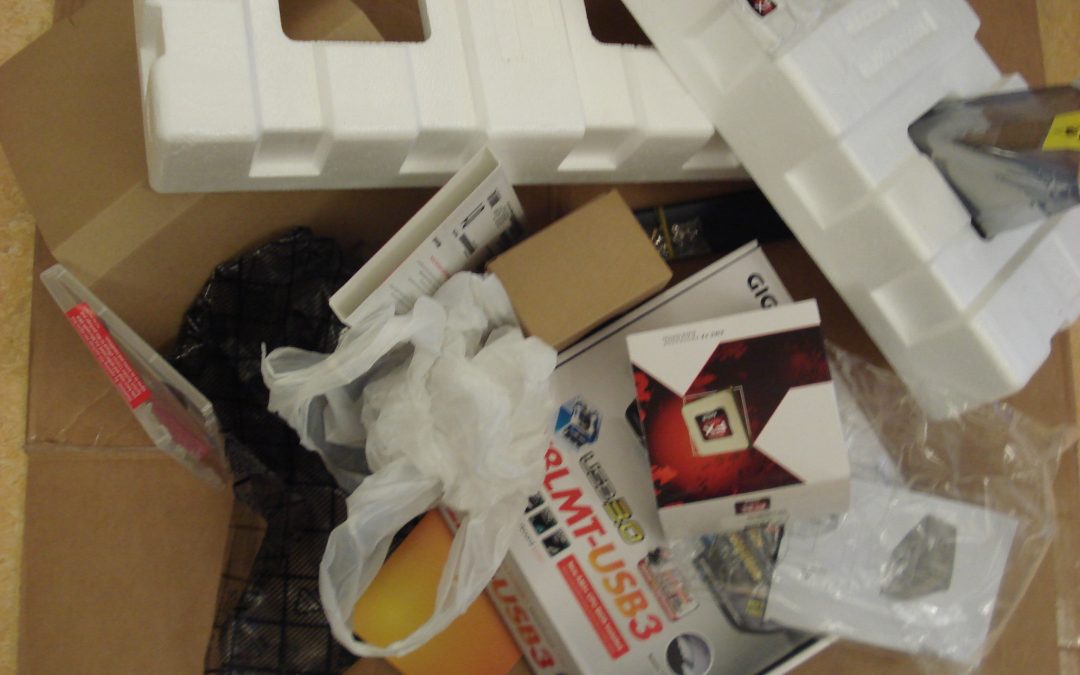 I am typing this blog post on Green Action Centre’s newest computer. A fancy fast machine that fulfills the latest iteration of Moore’s law – the idea that processing power will double every few years. I had qualms about ordering a new computer, considering all the e-waste that the industry produces. However, for the sake of my work productivity (the environment benefits from that productivity, I assure myself), I gave in. Overall, I am pretty happy with its performance so far.
I am typing this blog post on Green Action Centre’s newest computer. A fancy fast machine that fulfills the latest iteration of Moore’s law – the idea that processing power will double every few years. I had qualms about ordering a new computer, considering all the e-waste that the industry produces. However, for the sake of my work productivity (the environment benefits from that productivity, I assure myself), I gave in. Overall, I am pretty happy with its performance so far.
What I am less pleased with is the mountain of garbage the computer came with. As expected, the machine comes packed in large pieces of expanded polystyrene, (commonly known as Styrofoam), a substance which in theory is recyclable but has no known uses in Manitoba. Even though this product does not degrade for hundreds of years, at least it has a purpose by protecting the fragile components – I was not expecting my computer to be packed in hay. Still, these pieces are too large to fit in our office garbage can, which we only empty once a week in any case.
What surprised me more was that alongside the computer the retailer gave me a box overflowing with other boxes. Inside each box was more packaging – plastic shrink wrap, clam shells, cardboard casings, several empty low density polyethylene bags, and sundry bits and pieces. Sorting through this large box of trash, I was expecting that there would be something useful inside. Instead, like some giant babushka doll of unsustainability, it was only more garbage packed into garbage.
My first thought, was why are they burdening me with this box of trash? Could not my retailer have disposed of this themselves? I suppose that the retailer feels that this is the only way to demonstrate their product was assembled from new and genuine components. In the opaque world of commodity consumption, we must often rely on talismans such as packing boxes to judge the caliber of goods whose qualities we cannot directly perceive. I have no idea what a AMD FX 4300 core is, but its brightly coloured box assures me I will “enjoy the ultimate HD supercharged experience”. I can’t wait!
There is something wrong with our system of producer responsibility. According to the government of Manitoba’s website:
The aim of stewardship is to find better methods of diverting or reducing the amount of designated materials from landfill sites and encouraging product producers to consider design-for the-environment changes to manufacturing processes. This is achieved by bringing greater levels of responsibility to the producers and users of the materials and products.
Design for the environment should at minimum mean reduction of packaging to a quantity which is reflective of the requirements for safe storage and transport of the product. Use of excess packaging for the purpose of advertizing should be discouraged, especially for component parts that are not for direct consumer use.
Manitoba has been working on extended producer responsibility since 1990, before the launch of the world’s first website. Now, more than 20 years later, I sift through a pile of garbage looking for the instruction manual for my new computer.




Hi,
I recently wrote an essay for my world issues class about socialism vs. capitalism, and I touched on this issue:
“…Once a product has been sold on the market, the customer may discard that product in any way they may be legally entitled to. Over 99% of all products purchased in North America are disposed of in less than six months (according to “The Story of Stuff”). However, many products that get thrown out into the landfills are done so because consumers have little options for discarding obsolete products. Do the companies who make the products being purchased bear any responsibility in the recycling of their product in question? In a capitalistic society, the answer is a firm no, because recycling products requires an additional process to be added to a company’s economic model, thus increasing company expenses (i.e., profit vs. environmental sustainability). In a capitalist society, recycling requires government policy to be in place in order for manufacturing companies to be accountable for its products’ environmental footprint, even though those products are still legally the intellectual property of the company who designed them. Without policy, the company in question would not care at all what landfill their product ends up- just think of all of the Tim Hortons coffee cups that get thrown out- shouldn’t Tim’s at least offer a composting program for their environmental footprint? …”
It is however hard to imagine how a future of sustainable, closed-loop production-consumption for the computer industry can be achieved when the technology becomes obsolete so rapidly. I would at least like to see some incentives offered by manufacturers to turn in old parts and such for at least a small cash value (I’m crazy; I know).
Agreed – excellent post.
Excellent post, Josh. There is just too much packaging in general.
Do you get too much packaging with products you buy? Let us know about any excess packaging you found in products.